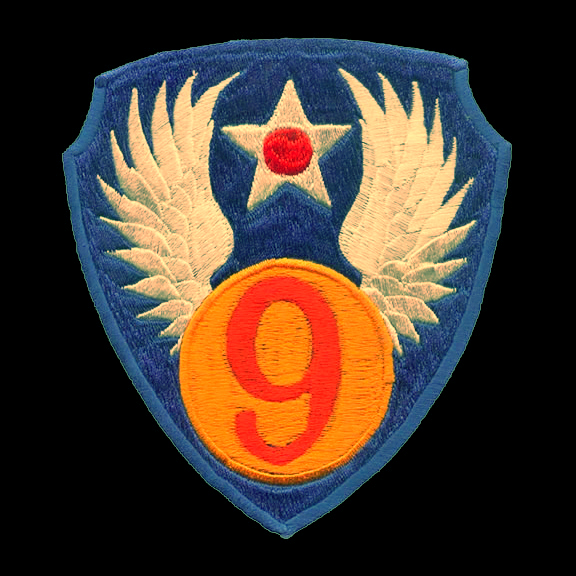 |
416th Bombardment Group (L) Aircraft Accident Report 44-10-10-2 October 10, 1943, Sunday
|
 |
Return to Table of Contents Return to MACR-AAR Index
 |
416th Bombardment Group (L) Aircraft Accident Report 44-10-10-2 October 10, 1943, Sunday
|
 |
|
Click to view Report
(Note: Depending on Internet speed, this report may take some time to download and display.) (AAR images from AAIR - Aviation Archaeological Investigation and Research.) Aircraft Serial Number (Type): 41-2992 (Douglas A-20B Havoc) 3rd AF; 416th Bomb Gp; 671st Bomb Sq Reason: Killed, Mid Air Collision (KMAC) Damage: Completely destroyed (5) Point Of Departure: Lake Charles AAFld, Louisiana Location: 3 Mi. West of Fenton, La.
Notes: Nature of accident: Mid-air collision at approximately 700 Ft. Altitude. Cause of accident: Indecision on Lt. Kempernolte's part as to whether to pull up or dive, during which he pulled up and nosed down two or three times, apparently made definite decision on the parts of both pilots late in develoment, both deciding to pull up at the last second, which resulted in the mid-air collision. Narrative: On the day of the mid-air collision the problem was a simulated straffing mission on a convoy from the 416th Bomb. Gp. by a three-ship formation, the convoy having a two-ship protective cover of pursuit, though the airplanes were the A-20 type. The two-ship "pursuit" flight took off at approximately 0800 o'clock, and the attack formation took off at approximately 0830 o'clock. The attack flight in the conventional three-ship formation located the convoy approximately 3-1/2 Mi. West of Fenton, La., which was heading slightly southwest on a Northeast-Southwest road, and slipped in under the protective "pursuit" element which did not see them until they were already attacking the convoy. After straffing the convoy, the attacking flight began a slight turn to the left and climbing at not over 500 Ft. per minute estimated. The leader of the "pursuit" flight made his dive attack from the left of this formation slightly to the rear, and approximately 1000 Ft. above this flight, was going too far to the right, so banked sharply back to the left of the attack flight, and then, at an approximate bank of 40d and in a slight right turn, continued his attack dive toward the leader of the attack flight. The pilot in #3 position did not see the attacking airplane, but states he saw his lead pilot looking at the plane. The pilot in #2 position said he saw the attacking pilot flying in as described above, and thought the attacking pilot was getting dangerously close. Both wing pilots state that as their leader saw the attacking airplane that he leveled off, and then as the airplane came close, seemed to become uncertain as to what to do and made a series of two or three up and down movements with his airplane, and then suddenly pulled up very steeply, and after gaining approximately 20 Ft. the attacking airplane hit the nose-section of the leader's airplane at about its own right engine section; both airplanes went up higher into the air, approximately 50 to 75 Ft., the attacking airplane apparently exploding and catching fire in the right engine section, then the airplanes separated and fell to the ground. The pilot in #3 position saw only the contact, dived down slightly and to the left, and states the attacking airplane came so close that it or its slipstream shook his airplane. The pilot in #2 position dived down and to his right, heard multiple fragments of the two crashed airplanes hit his airplane, which was not disturbed otherwise, and was joined in formation shortly thereafter by the #3 pilot. Description: On the 10th, while flying as escort for a convoy moving to the Bivouac area at the Gillis Airfield, 2nd Lt Robert F. Kempernolte and his BombardierNavigator, 2nd Lt John W. Wisdon, collided with a plane flying in the attacking formation. Occupants of the second plane were 2nd Lt Fred E. Holzscheiter, pilot; 2nd Lt Frederick H. McVay, Bombardier-Navigator; S/Sgt Clyde E. Graham, gunner. All occupants of both planes were killed. (416th BG History 1943) 10-10-43B. Fenton, Louisiana. At 0852, a Douglas A-20G and an A-20B collided in mid-air three miles west of Fenton, Louisiana, killing five fliers. Pilot 2Lt. Robert F. Kempernolte and bombardier/navigator 2Lt. John W. Wisdom were killed in the crash of the A-20G. Pilot 2Lt. Fred E. Holzscheiter, bombardier/navigator 2Lt. Frederick H. McVay and gunner SSgt. Clyde K. Graham were killed in the crash of the A-20B. Lt. Holzscheiter was leading a three-ship formation on an attack mission that took off from the Army Air Field at Lake Charles, Louisiana. The formation was to simulate an attack on a convoy of vehicles three and one-half miles west of Fenton. After locating the convoy and completing the strafing mission, the leader began a climbing turn to the left. Lt. Kempernolte, who was in a two-ship flight on a "pursuit" mission, flew close to the "attack" flight, flying slightly ahead and below Lt. Holzscheiter. Lt. Kempernolte's airplane was seen to move up and down on its pitch axis before entering a steep climbing attitude, colliding with Lt. Holzscheiter's airplane at an altitude of 700 feet above ground level. The starboard engine of Lt. Kempernolte's A-20 smashed into the nose of Lt. Holzscheiter's airplane, causing Lt Kempernolte's starboard engine section to burst into flames. Both airplanes, momentarily locked together, climbing about 50 feet before separating and falling straight to the ground where they exploded into flames. Apparently Lt. Kempernolte had just been restored to limited flying status four days earlier after being grounded for a lengthy period because of an eye problem. It was noted that the pilot was required to wear glasses at all times while flying. Investigators could not determine if Lt. Kempernolte was wearing glasses at the time of the collision. (Mireles, Vol. 2, Pgs. 545-546) |